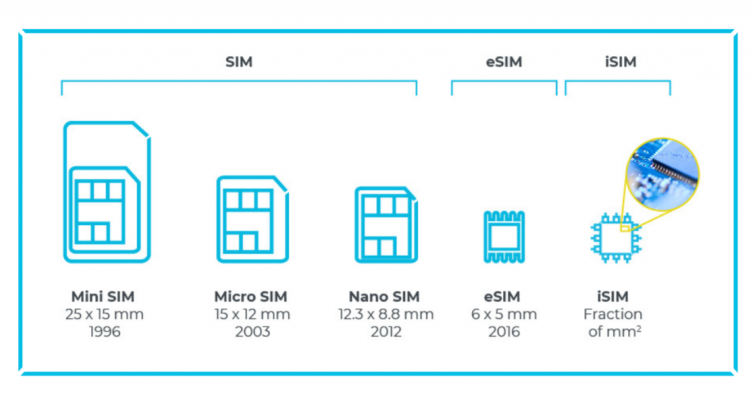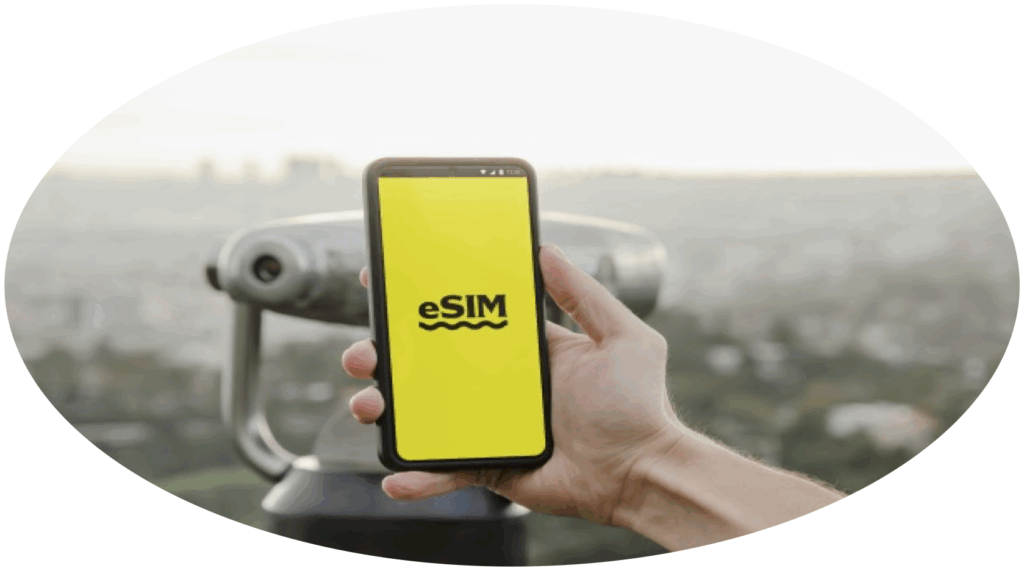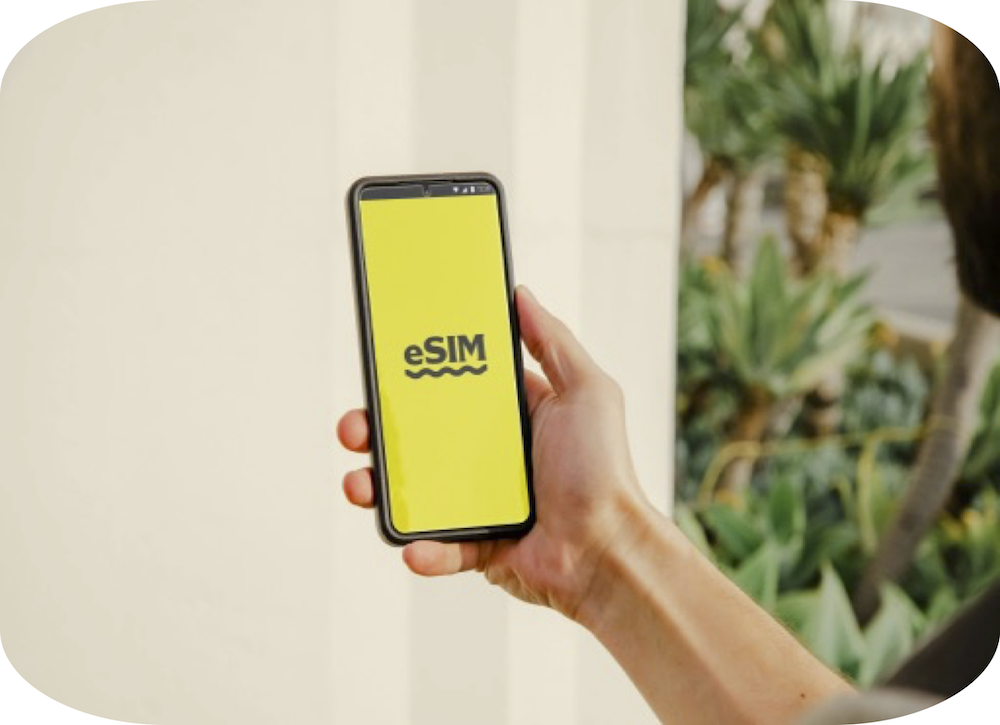 Mobile connectivity has advanced significantly since the introduction of the first SIM card in the early 1990s, paving the way for the emergence of cutting-edge iSIM technology in 2025. As we move deeper into the digital-first era, the traditional plastic SIM is rapidly becoming obsolete. The evolution from SIM to eSIM to iSIM is not merely a technical upgrade; it represents a complete reimagining of how we connect, communicate, and engage in a hyper-connected world.
Mobile connectivity has advanced significantly since the introduction of the first SIM card in the early 1990s, paving the way for the emergence of cutting-edge iSIM technology in 2025. As we move deeper into the digital-first era, the traditional plastic SIM is rapidly becoming obsolete. The evolution from SIM to eSIM to iSIM is not merely a technical upgrade; it represents a complete reimagining of how we connect, communicate, and engage in a hyper-connected world.
In this blog article, we explore the evolution from SIM to eSIM to iSIM and how this shift is shaping the future of global connectivity.
From Physical to Digital: A Quick Recap
- SIM (Subscriber Identity Module): The plastic card that stores your mobile identity and enables cellular connectivity. Still in use today, but being phased out rapidly.
- eSIM (Embedded SIM): A digital SIM embedded in your device. It allows remote activation, supports multiple profiles, and eliminates the need for physical cards.
- iSIM (Integrated SIM): Built directly into a device’s central processor. It delivers even greater efficiency, space savings, and enhanced security.
What’s New in SIM Technology in 2025?

- iSIM Adoption Goes Mainstream
As of mid-2025, over 30% of flagship smartphones are launching with iSIM support. Qualcomm, MediaTek, and Samsung have released chipsets that include native iSIM functionality. These chips don’t just support mobile connectivity, they integrate AI processing, 5G, and iSIM in one efficient system, reducing power consumption and hardware bulk.
- All Major U.S. Carriers Now Support eSIM-Only Phones
Following Apple’s full eSIM-only rollout, Verizon, AT&T, and T-Mobile now officially support eSIM-only phones for both postpaid and prepaid plans. This means more seamless activation, faster onboarding, and better compatibility for travelers and dual-SIM users.
- 5G Standalone + iSIM: A Powerful Duo
With the global rollout of 5G Standalone (SA) networks, iSIM devices are now optimized for ultra-low latency and higher reliability. iSIM devices don’t just connect—they self-manage connectivity across 5G, LTE, and Wi-Fi based on your location, signal strength, and data needs.
- Smart Devices with iSIM Are Booming
It’s not just smartphones, smartwatches, health monitors, industrial sensors, and smart meters that are now launching with iSIM for always-on connectivity. This enables remote monitoring, diagnostics, and real-time updates without the need for Wi-Fi or manual SIM configuration.
- Cross-Platform eSIM Profiles
Thanks to improvements in eSIM profile standardization, users can now move their eSIM profile across phones, tablets, and even laptops, just like cloud-based email or contacts. This portability makes it easier to upgrade devices without losing connectivity.
- Digital Identity and iSIM Integration
In 2025, several governments and banks have begun trialing digital ID authentication via iSIM. Your SIM can now securely verify your identity for online banking, health services, and travel check-ins, without needing third-party apps or a physical ID.
- Eco Impact: Billions of SIMs Saved
The shift to eSIM and iSIM is reducing environmental waste on a massive scale. In 2024 alone, over 2 billion fewer plastic SIM cards were produced. iSIM, being part of a device’s processor, is even more sustainable, as it reduces supply chain and packaging waste.
- Zero-Touch Provisioning for Enterprises
Businesses now benefit from Zero-Touch Provisioning with eSIM/iSIM. This enables IT teams to remotely assign, switch, and manage cellular plans for hundreds of devices across regions, making it ideal for logistics, remote teams, and global IoT deployments.
- Security Enhancements in iSIM
Two thousand twenty-five iSIMs include tamper-resistant architecture and hardware-level encryption, making them more secure than traditional SIM cards. If a device is stolen, the iSIM can be remotely locked or wiped, preventing unauthorized access to mobile services or sensitive data.
- Satellite eSIM Services Expanding
Companies like Starlink and Lynk have launched satellite-compatible eSIM services for devices in rural, disaster-prone, or off-grid areas. This means users can now enjoy reliable mobile access without relying on terrestrial towers, opening up new possibilities for global connectivity.

What to Expect by 2027
Here’s where the industry is headed in the next few years:
- Over 70% of connected devices will rely on eSIM or iSIM
- Physical SIM cards may be obsolete in leading markets by 2028
- iSIM will become standard in IoT, wearables, and AI-powered devices
Why RoamDigi Is the Smart Choice
RoamDigi is not just another eSIM provider. It’s a connectivity platform built for the future. Here’s why users around the globe trust RoamDigi:
- Frequent travelers avoid roaming fees with instant local plans
- Digital nomads get reliable data service across continents
- IoT innovators scale their operations with flexible embedded connectivity
With user-friendly onboarding, competitive rates, and global coverage, RoamDigi takes the stress out of staying connected, so you can focus on what matters.
Final Thoughts: Smarter Connectivity Starts Here
The evolution from SIM to eSIM to iSIM marks the beginning of a new era, where connectivity is digital, embedded, and secure. As devices become more intelligent and more autonomous, these technologies will be essential for keeping us connected across borders and platforms.
Ready to leave physical SIMs behind and embrace smarter, seamless connectivity?
Experience the future of global connectivity with RoamDigi.

